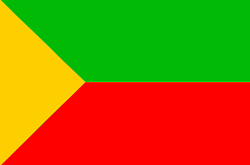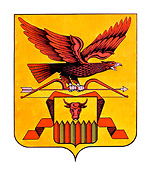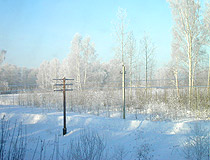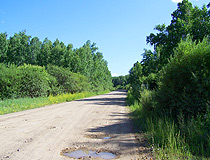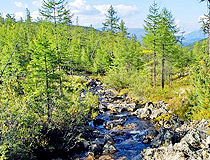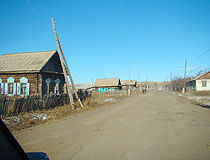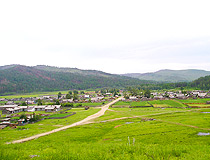Zabaykalsky Krai - Overview
Zabaykalsky Krai is a federal subject of Russia located to the east and southeast of Lake Baikal, part of the Far Eastern Federal District. Chita is the capital city of the region.
According to the Federal State Statistics Service of Russia, the population of Zabaykalsky Krai is about 984,000 (2025), the area - 431,892 sq. km.
History of Zabaykalsky Krai
The first people inhabiting Transbaikalia, known both from archaeological finds and written sources (mainly Chinese), were the nomadic people of the Hunnu (209 BC - 93 AD), who created a large state in the Central Asian steppes. In the 6th-9th centuries, Turkic Uighurs lived in this region.
In 1206, Temujin was proclaimed the great khan of the Mongolian state and adopted a new name - Genghis Khan. The territory of the region became an integral part of the Mongol Empire. In the 14th century, the Mongolian Empire collapsed into separate states. Until the 17th century, the territory of the present Zabaykalsky krai was part of the Mongolian state of Northern Yuan.
From the middle of the 17th century, Transbaikalia became part of the Russian state. The first explorers crossed Dauria (the lands beyond Lake Baikal) along the rivers. The Buryats and Tungus, after a long resistance, recognized the new power and paid tribute to Russia. Several fortified towns were founded. Among the first colonists there were a lot of exiled old believers.
Since 1704, Nerchinsky, Shilkinsky, Gazimursky, and other silver smelters appeared. In the 18th century, the population of the region grew rapidly due to the influx of settlers and criminals, who worked in mines. Great role in the development of the region was played by the exiled members of the Decembrist uprising (brothers Bestuzhev, M.S.Lunin, N.M.Muravyov, C.G.Volkonsky, A.I.Yakubovich and others). From 1782, the region was a part of Nerchinskaya (Zabaykalskaya) Oblast of Irkutsk Governorate.
More Historical Facts…
Since the 19th century, mining was the main industry of the region. In 1851, Zabaykalskaya Oblast was formed with the capital in Chita as part of Irkutsk Governorate. In the same year, with the goal of strengthening the border, the Trans-Baikal Cossack Army was created, numbering more than 3,500 people. At the end of the 19th century, the construction of the Trans-Siberian Railway forced the economic development of the region.
At the end of the 1920s - in the early 1930s, during collectivization, Cossack settlements were destroyed, the Buryat cattle-breeders were forced to have a settled way of life. In March 1934, Chita Oblast was formed, it became a part of Vostochno-Sibirsky Krai. On September 26, 1937, Vostochno-Sibirsky Krai was divided into Irkutsk and Chita oblasts. Within Chita Oblast there was Aginsky Buryat-Mongol national district formed.
During the Second World War, tens of thousands of local residents were drafted into the Soviet army. In connection with the threat of an attack by the Kwantung Army of Japan, the Transbaikal front was established here. In 1945, after the defeat of Nazi Germany, the Soviet Union began military operations against Japan.
Until 1949, about 77 thousand Japanese prisoners of war were engaged in work to restore the region. The local economy was completely restored by the 1950s. In 1969, there was an armed conflict on the Soviet-China border close to the frontier point of Nizhne-Mikhailovka on the Damansky Island.
In the 1990s, there was a sharp decline in industrial and agricultural production. On March 1, 2008, in the territory of Chita Oblast and the Aginsky Buryat Autonomous Okrug, a new federal subject of Russia was created - Zabaykalsky Krai.
Beautiful nature of Zabaykalsky Krai
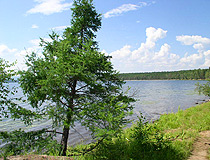
Lake in Zabaykalsky Krai
Author: Jenia Novoselov
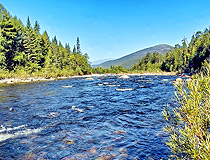
Small river in the Zabaykalsky region
Author: Sergey Bulanov

Hilly landscape in the Zabaykalsky region
Author: Sveshnikov Alexander
Zabaykalsky Krai - Features
Zabaykalsky Krai is located in Eastern Siberia. The greatest length from north to south is about 1,000 km, from west to east - 850 km. The highest point on the territory of the region is the peak of BAM (3,073 meters). The relief is represented by both plains and mountains, but mountains are predominant in the region.
The south and south-eastern borders of Zabaykalsky Krai are the state border of the Russian Federation with Mongolia and the People’s Republic of China. The largest rivers are the Argun, Shilka, Onon, Ingoda, Khilok, Chikoy. The national composition according to the 2010 census: Russians (89.9%), Buryats (6.8%).
The climate is sharply continental. Winters are long and severe, the average temperature in January ranges from minus 20 degrees Celsius in the south to minus 37 degrees Celsius in the north. Summers are short and warm (sometimes hot), the average temperature in July - about plus 20 and 13 degrees Celsius respectively.
This region of Russia has large reserves of coals, iron ores, silver, copper, tungsten, tin, antimony, lithium, tantalum, niobium, zircon, germanium, and uranium. Forests occupy about 60% of the region. The main problem of the forest area is the annual destruction of thousands of hectares of forest by natural fires.
Mining remains the main industry of the region. Ferrous metallurgy is developed as well as machine-building, timber industry, light and food industries. Agriculture is specialized in cattle- and sheep-breeding. In the north of the region reindeer-breeding and fur trade are developed. The crops grown are wheat, barley and oats.
Tourism in Zabaykalsky Krai
The border position of Zabaykalsky Krai promotes the rapid development of cross-border tourism. It has become the main “tourist gateway” for tourists coming from the Asia-Pacific region. The territory of the Zabaykalsky region has a wide variety of natural landscapes, unique monuments of nature.
Sports tourism with elements of extreme has always been attractive for tourists: rafting (the Burkal, Menza, Onon rivers), rock climbing, horseback riding, and bicycle travel. For these purposes more than 100 sports and tourist routes have been developed.
Ethno-tourism is associated with the culture of small peoples, such as the Evenks. Tours on reindeer are held. Chita, Nerchinsk, Sretensk, Petrovsk-Zabaikalsky, and Shilka have the status of historical settlements. On the territory of Zabaykalsky Krai ancient settlements of the Huns were discovered. The events attracting guests include the Trans-Baikal International Film Festival, the tourist festival on Kodar.
The main sights of Zabaykalsky Krai:
- Alkhanay National Park in Duldurginsky district - the only place in Russia where a harmonious system of cult Buddhist and natural monuments has been created;
- Krasniy Chikoy, the center of Krasnochikoysky district, is one of the oldest and most beautiful villages in the region;
- Mineral springs. The nearest mineral spring to Chita is Molokovka, a good place for taking pictures in nature;
- Mount Pallasa, located near Chita, is a monument of nature of regional importance;
- Zabaykalsky Alps - Kodar. In the north of the region there is an amazing country of contrasts and surprises - Charskaya depression with the surrounding mountain ranges. It is known for such monuments of nature as Kodar ridge with the highest point of Transbaikalia, Chara Sands - a miniature desert 10 km long;
- Lake Arey - a hydrological monument of nature, one of the favorite places for recreation. The lake is located in a picturesque forest area near the highway Chita-Khilok;
- Haatei Caves - two caves connected by a narrow passage. The first cave is called Ice, in winter, when water flows into the cave and freezes, you can see very beautiful patterns there. The second cave is considered a summer cave and is called Dry;
- Butinskaya Estate in Nerchinsk - the main attraction of this historical town;
- Old-Chita Mikhailo-Arkhangelsk Church (also known as Church of the Decembrists) is the oldest building in Chita where a museum dedicated to the Decembrists is located;
- Museum of the Decembrists in the town of Petrovsk-Zabaikalsky;
- Konduisky settlement - one of the monuments of Genghis Khan’s epoch.


